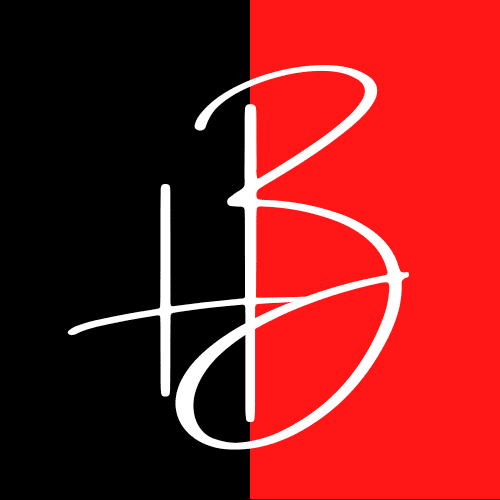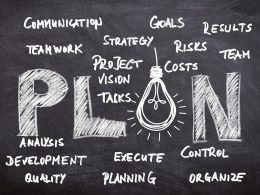Table of Contents Show
In today’s innovative business landscape, creativity and new ideas are essential for companies to stay competitive and drive growth. Structured idea generation through collaborative brainstorming techniques can unlock fresh thinking and solutions for organizations of all sizes.
Read on to learn best practices for facilitating productive and engaging sessions that boost innovation through the power of group discussion and creative thinking.
What is Idea Generation and Why Does it Matter?
Idea generation refers to the creative process of developing new concepts, perspectives, and solutions. It typically involves brainstorming techniques and exercises that spark imagination and unlock innovation.
For businesses and organizations, idea generation is a vital activity that fuels progress, evolution, and competitive advantage. It enables teams to:
- Solve existing problems in new, outside-the-box ways
- Identify opportunities for improvement or growth
- Adapt to changing environments and market conditions
- Envision the future direction and vision of the company
Simply put, without new ideas, organizations become stagnant. Idea generation provides fresh thinking that challenges the status quo and drives meaningful change.
Team Brainstorming: An Essential Driver of Innovation
One of the most effective ways to facilitate idea generation is through collaborative team brainstorming sessions.
By bringing together different perspectives in an open and judgement-free dialogue, teams can leverage their collective knowledge to generate creative solutions and innovations that no one individual may have conceived of alone.
Some key advantages of group idea generation include:
- Collaborative thinking: A diversity of insights, skills, and experiences leads to better ideas.
- Builds on ideas: Group discussion enables concepts to be expanded and improved.
- Encourages participation: Open sessions allow introverted team members to meaningfully contribute.
- Sparks creativity: Bouncing ideas off each other fuels further creative thinking.
- Promotes engagement: Collaborative sessions get employees invested in solutions.
- Strengthens teams: Working creatively together builds relationships and morale.
Overall, team-based idea generation creates an engine for innovation and evolution that drives business success. But to maximize its potential, structured facilitation and preparation is required.
Planning an Effective Idea Generation Session
Running a productive brainstorming session takes thought and planning. Consider these tips when organizing:
Define a clear goal or problem statement. Giving the session focus and purpose will drive more relevant idea generation.
Frame challenges as opportunities. For example, reframe “how to cut costs” into “how to add value”. This sparks creative thinking.
Compose a structured agenda. Having timed activities and questions helps generate momentum and participation.
Set ground rules. Agree to guidelines like allowing all ideas without judgement, building on others’ concepts, time management, confidentiality if needed, etc.
Gather data beforehand. Provide context to frame discussions. Share background research on the problem, industry information, case studies, etc.
Have materials ready. Whiteboards, sticky notes, pens, and highlighters enable capturing thoughts. Digital collaboration tools like Miro can also help.
With thoughtful planning and facilitation, the stage is set for an engaging and productive session.
Facilitating an Open, Inclusive Idea Generation Session
The right facilitation approach is crucial to eliciting ideas from the full team. Consider these tips for enabling open and honest participation:
Foster psychological safety. Ensure people feel comfortable sharing half-formed thoughts without fear of judgement.
Ask open-ended questions. Get discussions started with broad questions focused on possibilities rather than constraints.
Give equal “air time.” Prevent dominant extroverts from crowding out other voices by occasionally going “round robin” style.
Encourage wild ideas. Outlandish concepts can spur creative leaps. Structure activities where no idea is off limits.
Avoid shooting down ideas. Let all ideas emerge before evaluating. Build on and improve suggestions constructively.
Manage group dynamics. Watch for dysfunction like groupthink. Tactfully draw out introverts while regulating talkative members.
Enabling everyone to contribute without inhibition avoids stagnant groupthink and yields greater creativity.
Brainstorming Techniques to Spark Imaginative Ideas
Skilled facilitators have various tools and techniques at their disposal to spark imaginative thinking and discussion. Here are some effective brainstorming methods:
Focused free writing: Participants independently write down any ideas that come to mind related to the topic for 5-10 minutes. This allows introverts time to formulate thoughts.
Idea mapping: Starting with a core challenge in the center, participants expand out with related ideas and thoughts. This visual approach yields connections.
Worst idea: Purposefully suggesting bad or exaggerated ideas can surprisingly spark creative discussions and real solutions.
Random stimuli: Introducing random objects, images, or content unrelated to the topic encourages nonlinear thinking.
Rolestorming: Having participants assume fictional roles and perspectives inspires unorthodox ideas.
Idea boxes: Anonymous idea contribution removes inhibition and evaluation pressures.
By mixing up various creative exercises, you enable fresh perspectives to emerge from the team.
Capturing Idea Generation Session Results
After an engaging idea generation session, the last step is capturing all the valuable insights, concepts, and solutions generated so that they can inform next steps.
Take detailed notes. Comprehensively document all ideas, discussions, and suggestions that emerge. Bring a dedicated note taker if needed.
Use tools like whiteboards, flip charts and post-its to visually capture and organize brainstorming in real time. Take photos of these results.
Leverage digital capture through shared docs, Miro boards, Excel, or note-taking apps like Evernote so nothing falls through the cracks.
Categorize concepts and themes to distill order from the raw brainstorming results and start identifying viable directions.
Summarize and share post-session to ensure everyone shares the same understanding of the conclusions, recommendations, and next steps coming out of the session.
Thoughtful idea capture and organization transforms raw concepts into actionable innovation pathways.
Translating Ideas into Action and Impact
For idea generation to drive real improvement, the most promising concepts must ultimately translate into implementation and action. Some best practices include:
- Evaluate ideas against criteria like feasibility, resources required, and projected value or impact.
- Develop action plans to test or implement the ideas, clarifying owners, timelines, required resources.
- Create rapid prototypes to build early versions of promising solutions to test assumptions and iterate.
- Measure results using metrics or KPIs to track the impact of implemented ideas and solutions.
- Celebrate success by sharing wins from idea generation initiatives to promote engagement.
- Follow a structured innovation process to maintain momentum, from ideation to prioritization to prototyping and testing.
With a focus on action, organizations can turn game-changing ideas into real competitive advantage.
The Benefits of Frequent Idea Generation
Idea generation and brainstorming shouldn’t be limited to rare strategy off-sites or annual planning. Leading innovative companies integrate collaborative ideation into regular routines.
Some benefits of more frequent sessions include:
- Keeps innovation top of mind – Regular exercises build creative thinking skills.
- Early issue identification – New challenges and improvement opportunities can be identified faster by tapping collective intelligence.
- More iteration – Frequent ideation allows more cycles of prototyping, testing, and refinement to maximize solution quality.
- Promotes creative culture – Ongoing activities make innovation a habit and part of the organization’s DNA.
- Engages employees – Participative sessions enhance morale as employees see their impact.
- Surfaces diverse perspectives – Regular cadence ensures different voices are continually included.
While idea generation takes time and effort, maintaining a continuous pipeline of fresh thinking pays dividends through sustained innovation.
Common Idea Generation Challenges and Solutions
Of course, group idea generation doesn’t always run smoothly. Some common challenges include:
Lack of clarity or objectives – Without clear goals or problems to address, sessions meander unproductively. Take the time to frame challenges crisply.
Unbalanced participation – Strong personalities can dominate discussions while others hold back ideas. Tactful facilitation and inclusive activities combat this.
Prematurely dismissing ideas – Evaluative mindsets early on inhibit free-flowing concepts. Postpone critical assessment during the initial creative phases.
Groupthink – Conformity pressure leads to stunted, conventional perspectives. Seek dissenting voices and encourage everyone to expand on all ideas.
Limited diversity – Homogenous groups rarely generate breakthroughs. Aim for cognitive diversity in terms of disciplines, personalities, work experiences, cultural backgrounds.
With proactive preparation and facilitation, potential innovation limiting factors can be overcome.
Conclusion
For organizations seeking to adapt, evolve, and lead in their field, structured idea generation and brainstorming should be core innovation competencies.
By tapping into collective intelligence and creativity, teams can uncover powerful new solutions and directions. With proper facilitation and an inclusive environment, collaborative sessions unlock breakthrough thinking that drives meaningful progress.
Make idea generation a habitual exercise across the company. Maintaining an ongoing flow of fresh concepts will help maximize innovation, competitiveness, and ultimately, success.
The creative capacity is already present within your people – the right sessions provide a channel to unlock and leverage it fully.
Frequently Asked Questions
Here are answers to some common questions about generating impactful ideas:
What are some effective brainstorming techniques?
Some of the most effective techniques to get ideas flowing in brainstorming sessions include:
- Focused free writing – Having people independently write down ideas Related to the topic removes inhibitions.
- Idea mapping – Visually linking concepts together yields connections and themes.
- Introducing random stimuli – Injecting random elements encourages nonlinear thinking.
- Rolestorming – Assigning fictional roles or perspectives inspires unorthodox ideas.
- Worst idea technique – Intentionally suggesting bad ideas can surprisingly yield creative insights.
- Idea boxes – Contributing ideas anonymously creates safety for sharing.
Switching up techniques throughout the session keeps it energetic and insights flowing.
How can you ensure all voices are heard in a session?
Ensuring all team members meaningfully contribute is key to effective sessions. Some ways to enable this include:
- Foster psychological safety by making it clear all ideas are welcome.
- Use “round robin” techniques where each person shares a thought in turn.
- Watch out for domineering members crowding out others and kindly regulate.
- Directly solicit quieter members for contributions to draw them out.
- Use anonymous idea capture methods to give shy participants voice.
- Follow up post-session to gather any lingering thoughts people didn’t get to share.
With inclusive facilitation and varied participation methods, all perspectives will be captured.
What are potential idea generation challenges and solutions?
Some challenges that can arise in idea sessions include:
- Unclear goals – Lack of clarity leads to aimless discussions. Frame goals and problems crisply.
- Groupthink – Alignment pressure suppresses dissent. Encourage building on all ideas and active debate.
- Time-wasting – Irrelevant tangents sap momentum. Use timed activities and agendas.
- Evaluation pressure – Premature criticism inhibits ideas. Postpone critical analysis until after creative phases.
- Loud voices dominating – Balance participation with round robin and quiet member solicitation.
- Low diversity – Homogenous groups limit innovation. Seek diverse skill sets, thinking styles and backgrounds.
With thoughtful facilitation and inclusive culture, potential roadblocks can be navigated.







